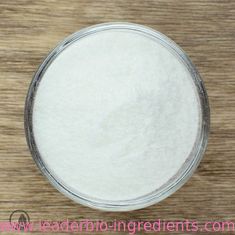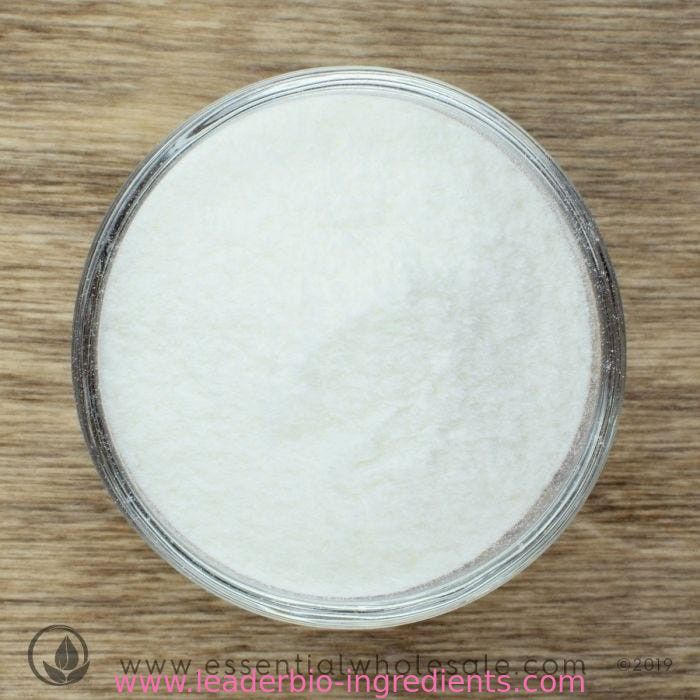
China Northwest Factory Manufacturer Betulin Cas 473-98-3 For stock delivery
-
Purity99.9%
-
UseHealth Care
-
OriginChina
-
Package1KG/Tin 25KG/Drum*Carton
-
ManufacturerXI'AN LEADER BIOCHEMICAL ENGINEERING CO.,LTD
-
Place of OriginCHINA
-
Brand NameLeader
-
CertificationISO,GMP,SGS,HALA,KOSER,HACCP
-
Model NumberLD
-
Minimum Order Quantity25KGS
-
PriceNegotiate
-
Packaging Details25KG/Drum
-
Delivery Time2-3 working days
-
Payment TermsWestern Union, MoneyGram, T/T, L/C
-
Supply Ability10MTS/Month
China Northwest Factory Manufacturer Betulin Cas 473-98-3 For stock delivery
| Betulin Basic information |
| Product Name: | Betulin |
| Synonyms: | Lup-20(29)-ene-3,28-diol, (3β)-;Betuline;BETULIN(P);betula camphor;BETULIN hplc;Betulin,Betulinol,Betulol,Betulenol;3b,28-Dihydroxylup-20(29)-ene;Betulinic alcohol |
| CAS: | 473-98-3 |
| MF: | C30H50O2 |
| MW: | 442.72 |
| EINECS: | 207-475-5 |
| Product Categories: | Triterpenoids;Tri-Terpenoids;Pentacyclic Triterpenes;chemical reagent;pharmaceutical intermediate;natural product;phytochemical;reference standards from Chinese medicinal herbs (TCM).;standardized herbal extract |
| Mol File: | 473-98-3.mol |
| Betulin Chemical Properties |
| Melting point | 256-257 °C(lit.) |
| alpha | D15 +20° (c = 2 in pyridine) |
| Boiling point | 493.26°C (rough estimate) |
| density | 0.9882 (rough estimate) |
| refractive index | 1.5045 (estimate) |
| storage temp. | 2-8°C |
| form | Off-white powder |
| pka | 15.10±0.10(Predicted) |
| Merck | 14,1189 |
| InChIKey | FVWJYYTZTCVBKE-ROUWMTJPSA-N |
| CAS DataBase Reference | 473-98-3(CAS DataBase Reference) |
| NIST Chemistry Reference | Betulin(473-98-3) |
| Safety Information |
| Hazard Codes | Xn,Xi |
| Risk Statements | 36/37/38-20/21/22-68/20/21/22-68 |
| Safety Statements | 36/37-36-26 |
| WGK Germany | 3 |
| RTECS | OK5755000 |
| HS Code | 29181985 |
| MSDS Information |
| Provider | Language |
|---|---|
| Betulin | English |
| SigmaAldrich | English |
| Betulin Usage And Synthesis |
| Extract | Betulin is an extract from bark of the white birch tree, which has been known since the 18th century and is chemically defined. Betulin was discovered by German-Russian chemist Johann Tobias Lowitz. He was the first scientist to study and characterise betulin, and in doing was one of the first to isolate an active plant ingredient. Betulin is a substance of pure plant origin that gives the birch bark its typical white colour. Betulin protects birch trees from environmental effects, such as extreme temperatures, pest infestations and solar radiation. |
| Physical and Chemical Properties | It is white crystalline powder, soluble in alcohol, chloroform and benzene, slightly soluble in cold water, petroleum r. |
| Extraction method | Currently Betulin is obtained mainly through direct extraction, and mainly by solvent reflux extraction and recrystallization purification Specifically: 1. Extract betulin from ethanol solution. After heating reflux about 5h, the extract is vacuum distillated and recrystallized with ethanol for 2 to 3 times with ethanol to obtain crude product of betulin. 2. The crude product was recrystallized from methanol/chloroform (1: 1) (every 80g crude product requires 300mL methanol/chloroform solution).The mixture is allowed to stand overnight and then suction filtered to obtain white needle-like betulin. 3. Ultrasonic treatment for 20min when refluxing is carried out, and the extraction yield and product purity of betulin can be improved through the destruction of bark organization. 4. The optimum conditions of supercritical CO2 fluid extraction are as follows: the amount of modifier was 115mL/(g birch bark powder); extraction pressure is 20MPa; extraction temperature was 55 ℃; liquid CO2 flow rate was 10kg/h. |
| Identification method | HPLC conditions for betulin: Isolated Constituent: Betulin(10μl sample injection) Column Stationary Phase: C18(150×2)mm 5μ Column Mobile phase: Acetonitrile/water =30:70 Flow rate (ml/min);0.2Detection Wavelength (nm):270 Column Temperature:30℃ |
| Physiological functions |
|
| Storage | Cool and dry, kept from light and temperature. |
| References | http://www.imlan.de/en/infothek/what-is-betulin.html |
| Chemical Properties | crystals |
| Uses | antineoplastic, antihyperlipidemia |
| Uses | birch bark extract is described as having anti-irritant and antiseptic properties, and effective in acne treatment. It is used to make sunburn products, soothing lotions, and aftershaves. The oil is astringent and is mainly used for its curative effects, especially in cases of acne and eczema. In folkloric medicine, birch bark extract was considered good for bathing skin eruptions. Destructive distillation of the bark’s white epidermis yields an empyreumatic oil known as oil of birch tar, Oleum rusci, or dagget. This is a thick, bituminous, brownish-black liquid with a pungent, balsamic odor. It contains a high percentage of methylsalicilate, creosol, and guaiacol and is almost identical to wintergreen oil. |
| Definition | ChEBI: A pentacyclic triterpenoid that is lupane having a double bond at position 20(29) as well as 3beta-hydroxy and 28-hydroxymethyl substituents. |
| Anticancer Research | In addition, triterpenoids (betulin and its derivatives) isolated from HSSEactivated the signaling pathway regulated by p53 family genes, leading to the inhibition of BC cell viability or even the induction of apoptosis. And also, theseresearchers found that all the triterpenoids had no effect on normal breast cells.These findings provide an important basis for the use of those triterpenoids in thedevelopment of alternative therapies for breast cancer treatment (Hsu et al. 2015). |
